A trifecta is usually a good thing. In the gambling world, it means that you’ve hit progressively three times in a row. Trifecta is a recent addition to the English language. It first appeared in the early 1970s as a term for a horse-racing bet in which the first, second, and third place finishers are chosen in the correct order. The word has since broadened in meaning: it can now also refer to a group of three (usually desirable) things. It is found in everything from advertisements to media company names to casual speech. Trifecta combines the prefix “tri-“ (meaning “three”) with the last element in “perfecta,” a word of American Spanish origin that refers to a horse-racing bet in which the first- and second-place finishers are chosen correctly.
In towing, I have found a “trifecta” which are three of the most common issues I come across in our industry: The first two issues are summarized in common statements I hear: “If it fits, it ships.” and “I haven’t lost one yet.” The third are the poor choices on using social media. The irony of it all is that those who use the phrases or unwisely post on social media are proud of it when the opposite should be true as they are putting everything they own at risk! Let’s take a look at all three:
“If it fits, it ships”
The accompanying photo makes me cringe. If it doesn’t make you cringe, it probably should, or should at least get your attention. If you’re not bothered by it, you may not have all the facts (Just read on, and you will.). It may be that when you know the facts you still may not care, and if so, you’re directly contributing to a lazy and uncaring attitude toward the industry, and you don’t care how much you pay for insurance.
We have a Freightliner M2 extended cab flatbed towing a Dodge 5500 flatbed. Let’s look at how many things we can count that are wrong: Gross Vehicle Weight Rating (GVWR) on the Freightliner is 26,000 lbs. The maximum the truck is allowed to carry, including the weight of the truck, fuel, driver and passengers, and cargo, is 26,000 lbs. It isn’t a suggestion; it’s Federal statute! There’s a decal on the door frame displaying the GVWR for anyone to see, including the driver, company owner, and of course, law enforcement.
The “tare” weight on the Freightliner M2 is 16,800 lbs. Tare references all weights involved as discussed in the last paragraph, but without cargo. 26,000 minus 16,800 equals 9,200. So, Federal law and the vehicle’s manufacturer says that the MOST weight you can carry is 9,200 lbs. The deck is rated for 10,000 lbs. just for information. The Dodge 5500 with a steel flatbed weighs 14,600 lbs. Hmm. No matter what, no matter what circumstances, or what anyone says, you’re 5,400 lbs. over manufacturer’s stated GVWR and at least 4,600 lbs. over the deck rating.
But wait – there’s more! The rear axle of the Freightliner M2 is rated at 18,000 lbs. I promise you on a stack of Monopoly money that the rear axle of that setup in the photo weighs more than 18,000 – there’s the tare weight of close to 11,000 lbs. (rear axle, Freightliner) and a large portion of the 14,600 lb. weight of the Dodge hanging on the rear tires.
Look at several things with me: the very rear edge of the bed on the Freightliner is flexing and bending from too much weight. The rear tires are squatting hard, and the front end has very little weight on it, so you may need to stab the brakes to get the steer tires to stick while you try to brake or turn. That may sound funny, but it’s incredibly dangerous. In a nutshell, this is a very unsafe and illegal load.
An elder member of my family and I have gone ‘round and ‘round about towing and capacity. He has a 1982 Chevrolet S-10 4×4 (2.8 V6 with 5-speed manual), and he’s towed a 28-foot Terry travel trailer with it. I told him that the 8,500 lb. trailer was way over the capacity for that truck. He argued that it could move it just fine! I explained that just because you can move something, doesn’t mean you can control it. Heck, any one of us could pull a truck with a rope on level ground and get it moving – now, try to control it with your hands and body when it takes off down a hill or around a corner. Again, just because you can move something doesn’t mean you can control it.
And that’s exactly what these capacity numbers are there for – the manufacturer takes into account the braking system, steering system, body sway mechanisms, and engine power. The attitude of “if it fits, it ships” is not only insanely ignorant, it’s downright dangerous and can cost you your entire business due to your negligence when you knowingly abuse your equipment. Talk about lawyers having a field day! You’ve gift-wrapped a great case for them.
“I haven’t lost one yet!”
 And yes, there’s even more! “I haven’t lost one yet!” That phrase scares the life out of me. It’s usually uttered by people who have been doing dangerous, unprofessional things in the name of saving a couple of minutes or being lazy, and karma hasn’t caught up to them yet. Is over-using your equipment, using only one chain on a flatbed, or using no wheel straps on a wheel-lift truck really saving you that much time and effort? When you have an accident, and you will – it’ll cost you everything you own.
And yes, there’s even more! “I haven’t lost one yet!” That phrase scares the life out of me. It’s usually uttered by people who have been doing dangerous, unprofessional things in the name of saving a couple of minutes or being lazy, and karma hasn’t caught up to them yet. Is over-using your equipment, using only one chain on a flatbed, or using no wheel straps on a wheel-lift truck really saving you that much time and effort? When you have an accident, and you will – it’ll cost you everything you own.
That statement is also used in conjunction with the notion that “I’m only going across town.” Let me ask you this: If you loaded a car on a flatbed while right off a highway exit, got on the freeway, set the cruise control, took an exit 50 miles down the road and unloaded it right there, how much stress would be placed on your securement during that trip?
Now, hook the same car, roll across town, slowing down for school zones, slamming on the brakes because someone squealed out of a parking lot and cut you off, and you hit 47 stop lights. How much stress is on your securement? “I’m only going across town” is a hundred times more dangerous to you and your equipment than a 50-mile freeway ride, yet “across town” is where I see the most securement shortcuts.
Poor Social Media Choices
 Last, but not least, tell him what he’s won! This photo was posted on social media–Facebook, to be exact. We can share the photo and original post with a single click and drop it onto Twitter, Instagram, LinkedIn, or several other sites, as well as copy and paste it into a text message or email. You’d better bet that all kinds of people in the industry will see it – both for good and bad reasons, for laughter and for training. Also, when that company is involved in an accident, law enforcement, insurance adjusters, attorneys, and expert witnesses like me can dig it up with ease – and hang the company out in the breeze.
Last, but not least, tell him what he’s won! This photo was posted on social media–Facebook, to be exact. We can share the photo and original post with a single click and drop it onto Twitter, Instagram, LinkedIn, or several other sites, as well as copy and paste it into a text message or email. You’d better bet that all kinds of people in the industry will see it – both for good and bad reasons, for laughter and for training. Also, when that company is involved in an accident, law enforcement, insurance adjusters, attorneys, and expert witnesses like me can dig it up with ease – and hang the company out in the breeze.
“If it fits, it ships” – please stop saying and doing that!
“I haven’t lost one yet” – please stop being lazy and unsafe!
Concerning social media, watch what you post because I assure you – everyone else is!

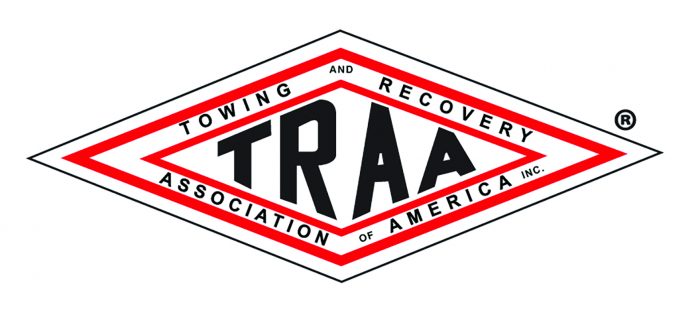
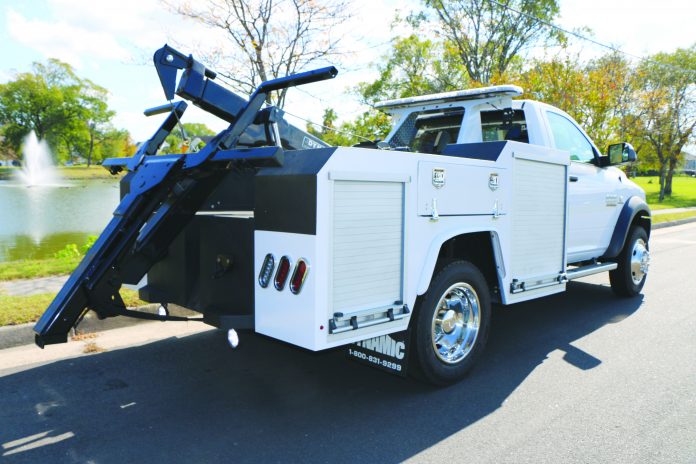
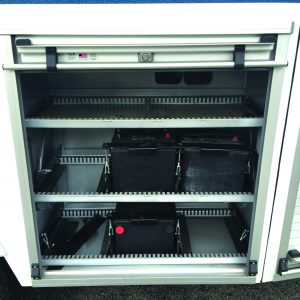 The Service Truck is equipped with four rollup-door storage compartments for safe and easy curbside access totaling an amazing 80-cubic feet of usable space. The fenders are poly, so no more rust, and they are lighter, so you can carry more cargo weight without the risk of being overweight. These huge compartments can be delivered with an optional adjustable rack system for vehicle batteries and can provide safe stowing of up to 36 batteries in large boxes able to hold enough batteries to cover most vehicles on the road. The boxes have adjustable shelves with tie-downs, so the batteries are always secured while in motion. In addition, both sides of the Service Truck have wide toolboxes and another large storage compartment on the deck for a total of seven compartments. Accompanying deck space measuring 54” x 85” allows for plenty of space for dollies, go jacks, and additional storage options.
The Service Truck is equipped with four rollup-door storage compartments for safe and easy curbside access totaling an amazing 80-cubic feet of usable space. The fenders are poly, so no more rust, and they are lighter, so you can carry more cargo weight without the risk of being overweight. These huge compartments can be delivered with an optional adjustable rack system for vehicle batteries and can provide safe stowing of up to 36 batteries in large boxes able to hold enough batteries to cover most vehicles on the road. The boxes have adjustable shelves with tie-downs, so the batteries are always secured while in motion. In addition, both sides of the Service Truck have wide toolboxes and another large storage compartment on the deck for a total of seven compartments. Accompanying deck space measuring 54” x 85” allows for plenty of space for dollies, go jacks, and additional storage options.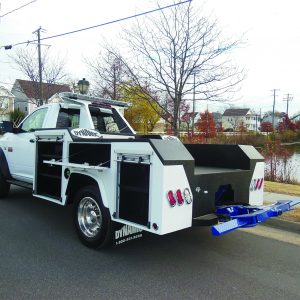 We originally started with a 4000-lb. lift, then went up to a 5000-lb. under lift. We decided to add a 5000-lb. wheel lift with a recovery boom and an 8000-lb. Ramsey winch. A front push bumper is also available with an optional winch. We did this because after speaking to our customers, we found that they were wanting one vehicle to do as much as possible, so now you can do everything from a battery boost to a battery replacement to a tow or all the way up to a recovery with one vehicle. The service technician can test the disabled vehicle’s battery and electrical system to get the vehicle running under its own power. If necessary, the tech can install a new battery in the vehicle at the breakdown site. However, as in many cases, the battery is not the cause of the breakdown. After eliminating all the things a Service truck can do to assist the stranded customer, all you must do now is hook up the car.
We originally started with a 4000-lb. lift, then went up to a 5000-lb. under lift. We decided to add a 5000-lb. wheel lift with a recovery boom and an 8000-lb. Ramsey winch. A front push bumper is also available with an optional winch. We did this because after speaking to our customers, we found that they were wanting one vehicle to do as much as possible, so now you can do everything from a battery boost to a battery replacement to a tow or all the way up to a recovery with one vehicle. The service technician can test the disabled vehicle’s battery and electrical system to get the vehicle running under its own power. If necessary, the tech can install a new battery in the vehicle at the breakdown site. However, as in many cases, the battery is not the cause of the breakdown. After eliminating all the things a Service truck can do to assist the stranded customer, all you must do now is hook up the car.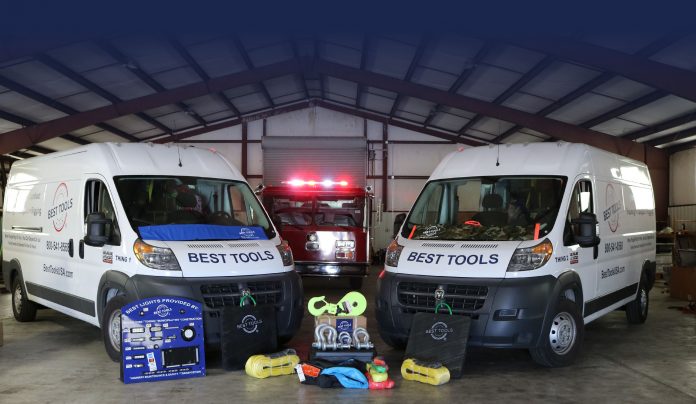
 Also, in the last five years, we invested in a van that would hit the ground fully stocked with all kinds of products calling on industries from towing companies, mechanic shops, dealerships, body shops, construction companies, trucking companies, police and fire stations to municipalities. If we feel you could use Best Tools products, we will stop and see you, now that we have two vans hitting the streets. Talking to customers face-to-face and establishing a relationship, we have modified and improved our lockout tools and have designed new products to help the towing industry. Just to name a few items, our Silver Snatcher lockout tool (our version of the Axle chain and Steering Wheel strap) has been a huge hit in the market.
Also, in the last five years, we invested in a van that would hit the ground fully stocked with all kinds of products calling on industries from towing companies, mechanic shops, dealerships, body shops, construction companies, trucking companies, police and fire stations to municipalities. If we feel you could use Best Tools products, we will stop and see you, now that we have two vans hitting the streets. Talking to customers face-to-face and establishing a relationship, we have modified and improved our lockout tools and have designed new products to help the towing industry. Just to name a few items, our Silver Snatcher lockout tool (our version of the Axle chain and Steering Wheel strap) has been a huge hit in the market.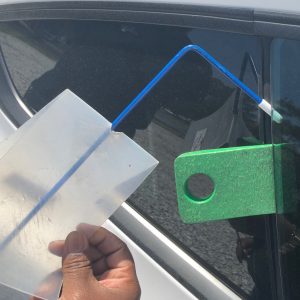 So, you can not only get dependable, quality lockout gear from Best Tools, but now you can also get top notch rigging and recovery equipment, transport and trucking straps and restraints, emergency lighting and strobe light heads, truck accessories and work lighting, safety gear, wireless tow lights and wireless control systems, skates, winches, wire-rope and synthetic slings to much more. All of this is from a company committed to providing cutting-edge technologies inspired by direct customer feedback. Best Tools has always been a “grass root” business focusing on reaching out to the customer in a personal way. Remember, “When People Rely on You – You Can Depend on Us!”
So, you can not only get dependable, quality lockout gear from Best Tools, but now you can also get top notch rigging and recovery equipment, transport and trucking straps and restraints, emergency lighting and strobe light heads, truck accessories and work lighting, safety gear, wireless tow lights and wireless control systems, skates, winches, wire-rope and synthetic slings to much more. All of this is from a company committed to providing cutting-edge technologies inspired by direct customer feedback. Best Tools has always been a “grass root” business focusing on reaching out to the customer in a personal way. Remember, “When People Rely on You – You Can Depend on Us!”



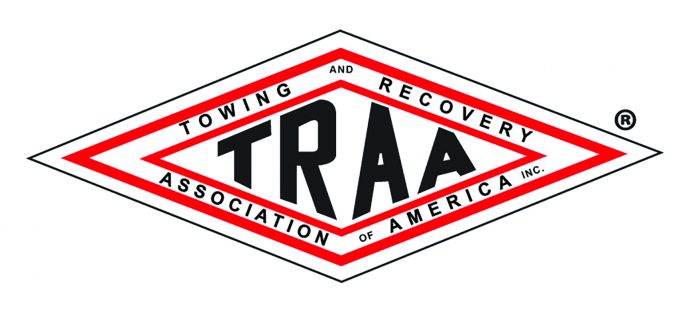

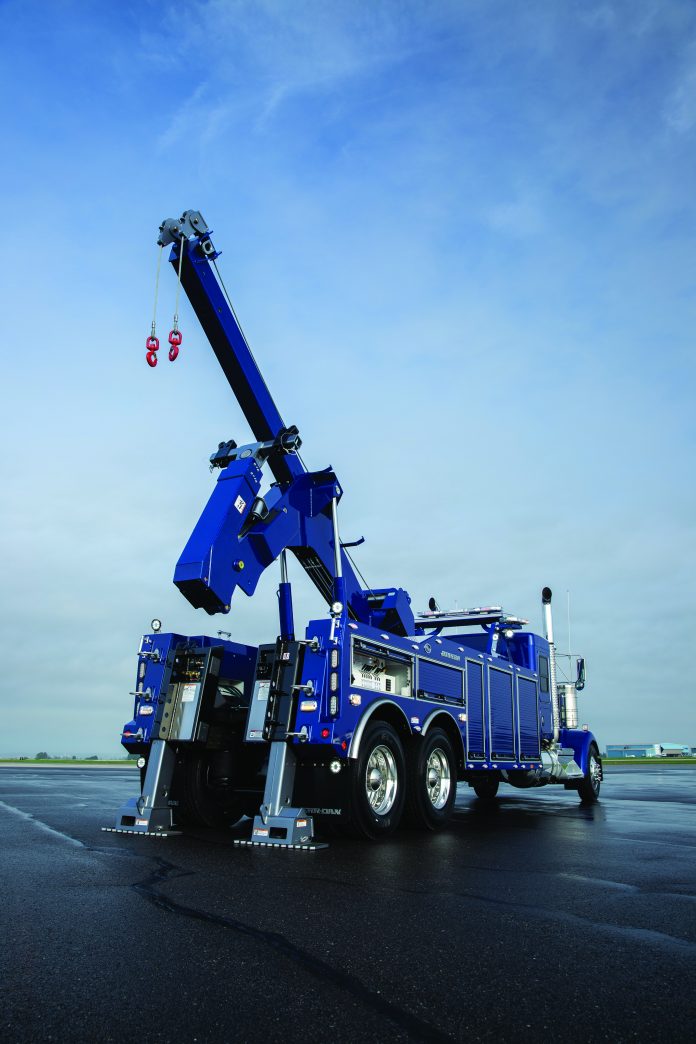

 The company has chosen to focus on numerous public safety disciplines and to identify some specific groups who are highly impacted by the lack of compliance with the existing Slow Down Move Over laws in all 50 states. Primary responders like Police, Fire, Towing, and EMS were the most obvious choices due to the on-demand nature of their response and the additional dangers of being on the roadside in situations where your presence is unplanned. Additionally, SDMO Gear has specifically called out the Mobile Mechanic role, Road Construction workers, and Flaggers, all of whom face many different types of situations and deal with the same driving public as the others. There are certainly more to be recognized but SDMO Gear is also working to setup the relationships with the best organizations offering support to the various groups.
The company has chosen to focus on numerous public safety disciplines and to identify some specific groups who are highly impacted by the lack of compliance with the existing Slow Down Move Over laws in all 50 states. Primary responders like Police, Fire, Towing, and EMS were the most obvious choices due to the on-demand nature of their response and the additional dangers of being on the roadside in situations where your presence is unplanned. Additionally, SDMO Gear has specifically called out the Mobile Mechanic role, Road Construction workers, and Flaggers, all of whom face many different types of situations and deal with the same driving public as the others. There are certainly more to be recognized but SDMO Gear is also working to setup the relationships with the best organizations offering support to the various groups.




 And yes, there’s even more! “I haven’t lost one yet!” That phrase scares the life out of me. It’s usually uttered by people who have been doing dangerous, unprofessional things in the name of saving a couple of minutes or being lazy, and karma hasn’t caught up to them yet. Is over-using your equipment, using only one chain on a flatbed, or using no wheel straps on a wheel-lift truck really saving you that much time and effort? When you have an accident, and you will – it’ll cost you everything you own.
And yes, there’s even more! “I haven’t lost one yet!” That phrase scares the life out of me. It’s usually uttered by people who have been doing dangerous, unprofessional things in the name of saving a couple of minutes or being lazy, and karma hasn’t caught up to them yet. Is over-using your equipment, using only one chain on a flatbed, or using no wheel straps on a wheel-lift truck really saving you that much time and effort? When you have an accident, and you will – it’ll cost you everything you own. Last, but not least, tell him what he’s won! This photo was posted on social media–Facebook, to be exact. We can share the photo and original post with a single click and drop it onto Twitter, Instagram, LinkedIn, or several other sites, as well as copy and paste it into a text message or email. You’d better bet that all kinds of people in the industry will see it – both for good and bad reasons, for laughter and for training. Also, when that company is involved in an accident, law enforcement, insurance adjusters, attorneys, and expert witnesses like me can dig it up with ease – and hang the company out in the breeze.
Last, but not least, tell him what he’s won! This photo was posted on social media–Facebook, to be exact. We can share the photo and original post with a single click and drop it onto Twitter, Instagram, LinkedIn, or several other sites, as well as copy and paste it into a text message or email. You’d better bet that all kinds of people in the industry will see it – both for good and bad reasons, for laughter and for training. Also, when that company is involved in an accident, law enforcement, insurance adjusters, attorneys, and expert witnesses like me can dig it up with ease – and hang the company out in the breeze.
